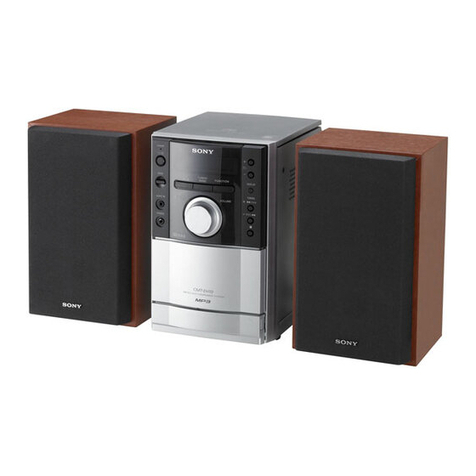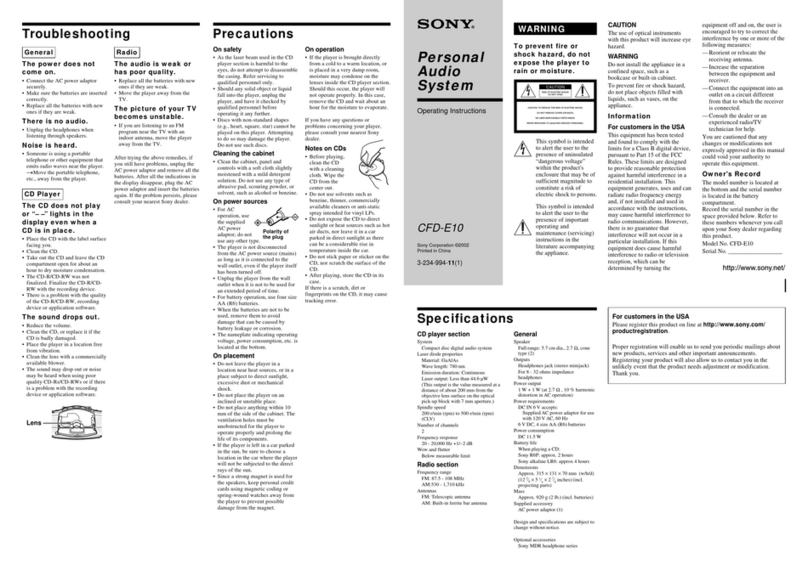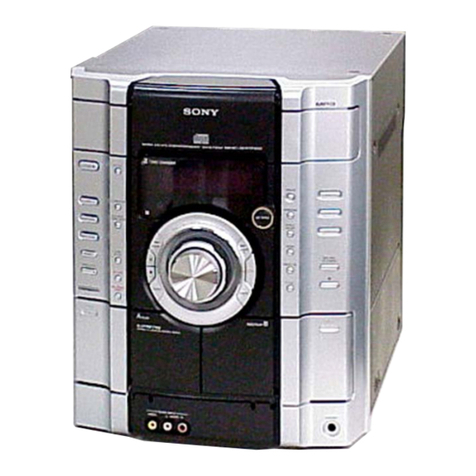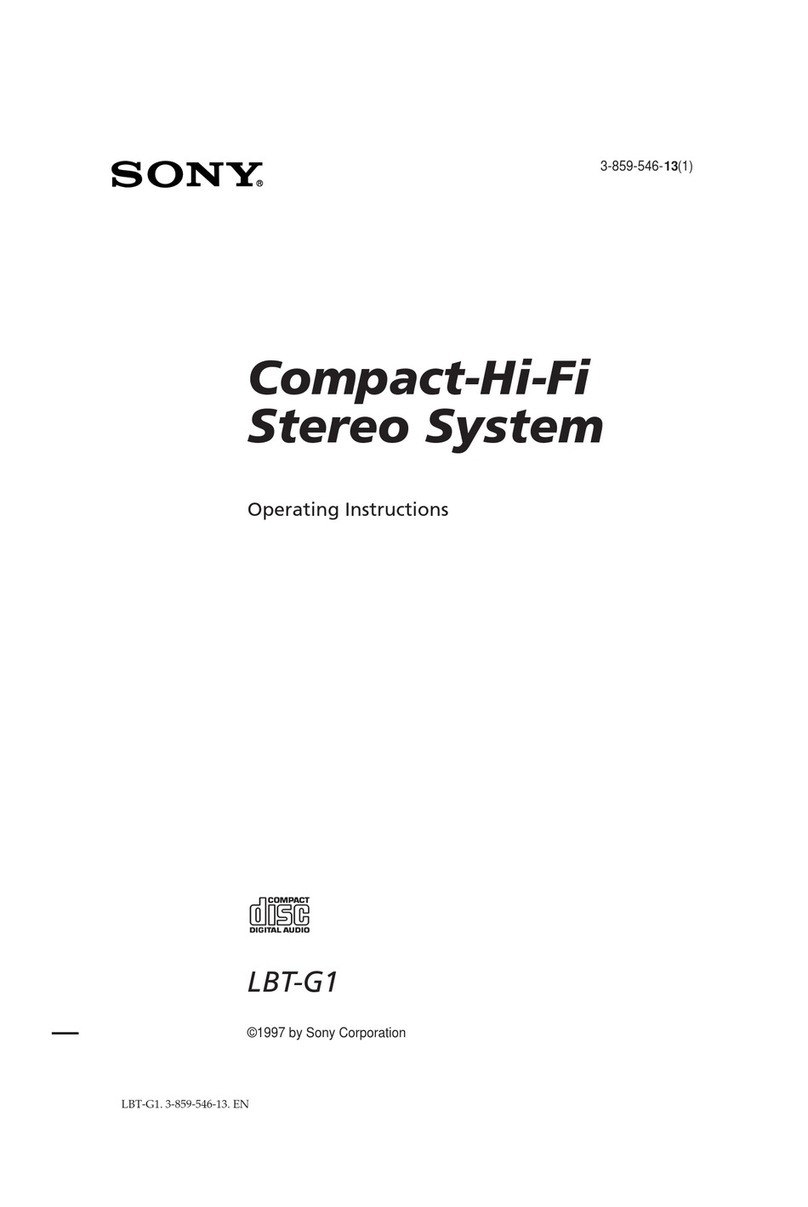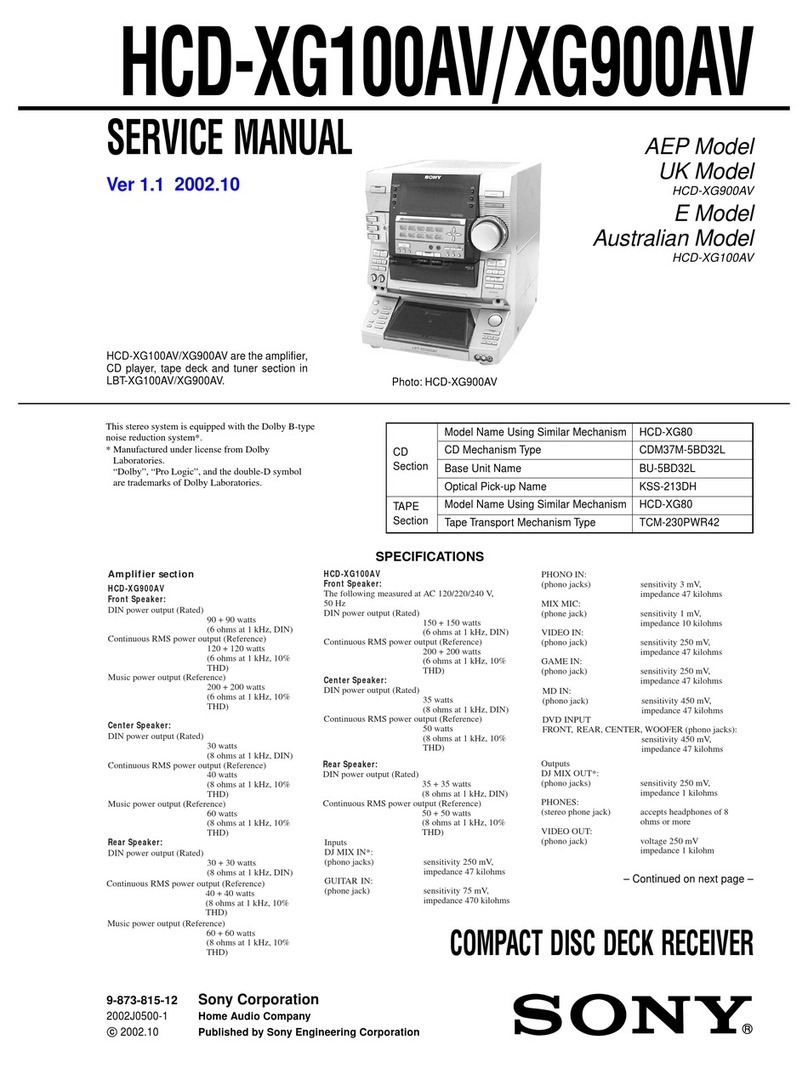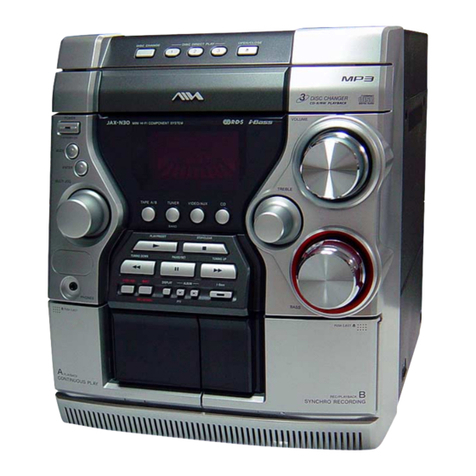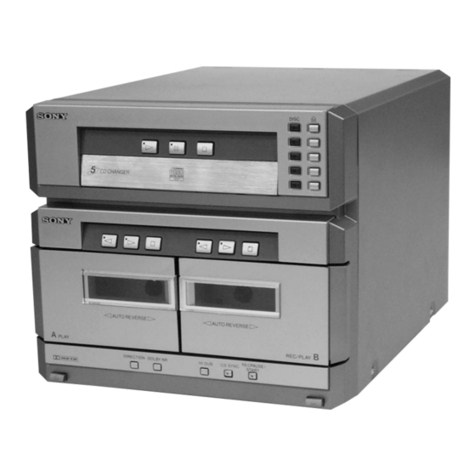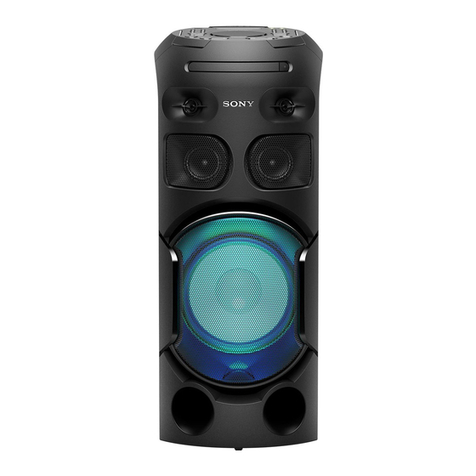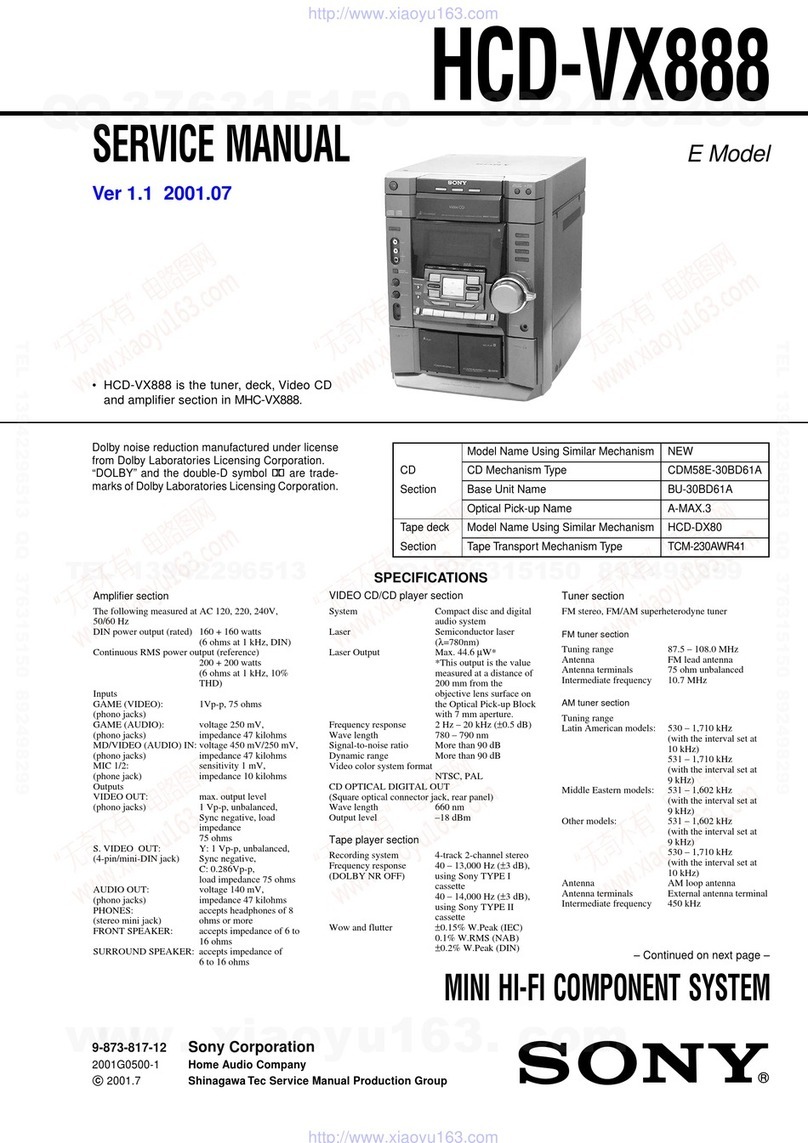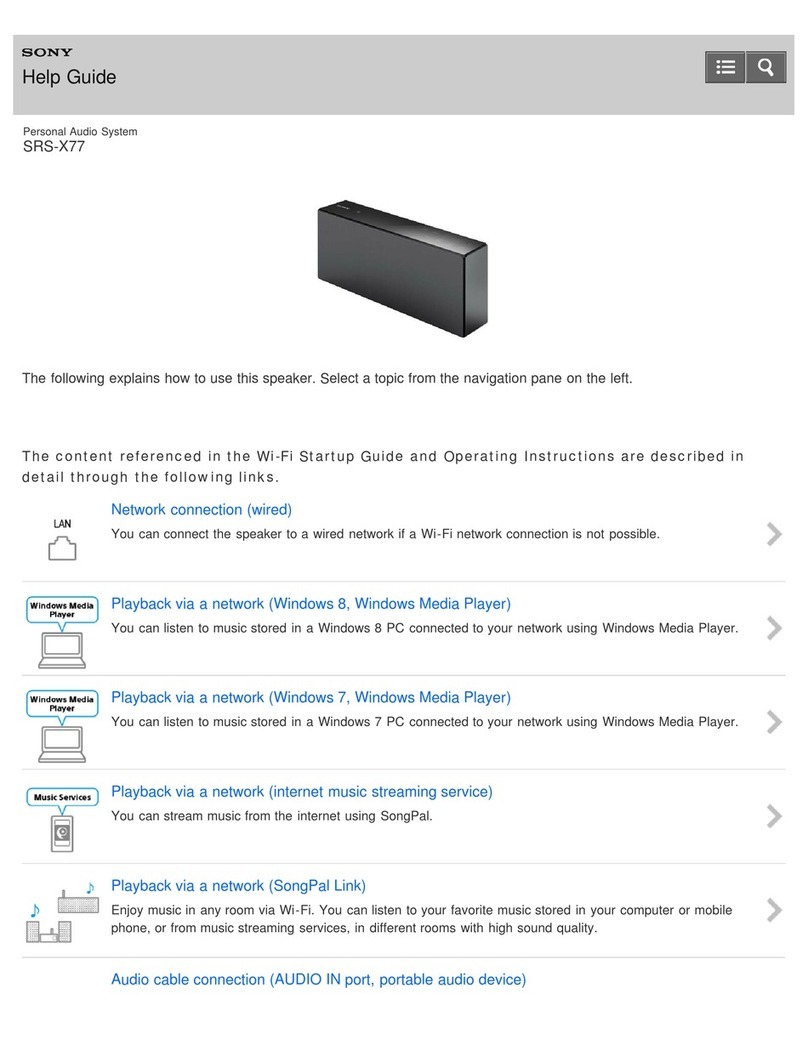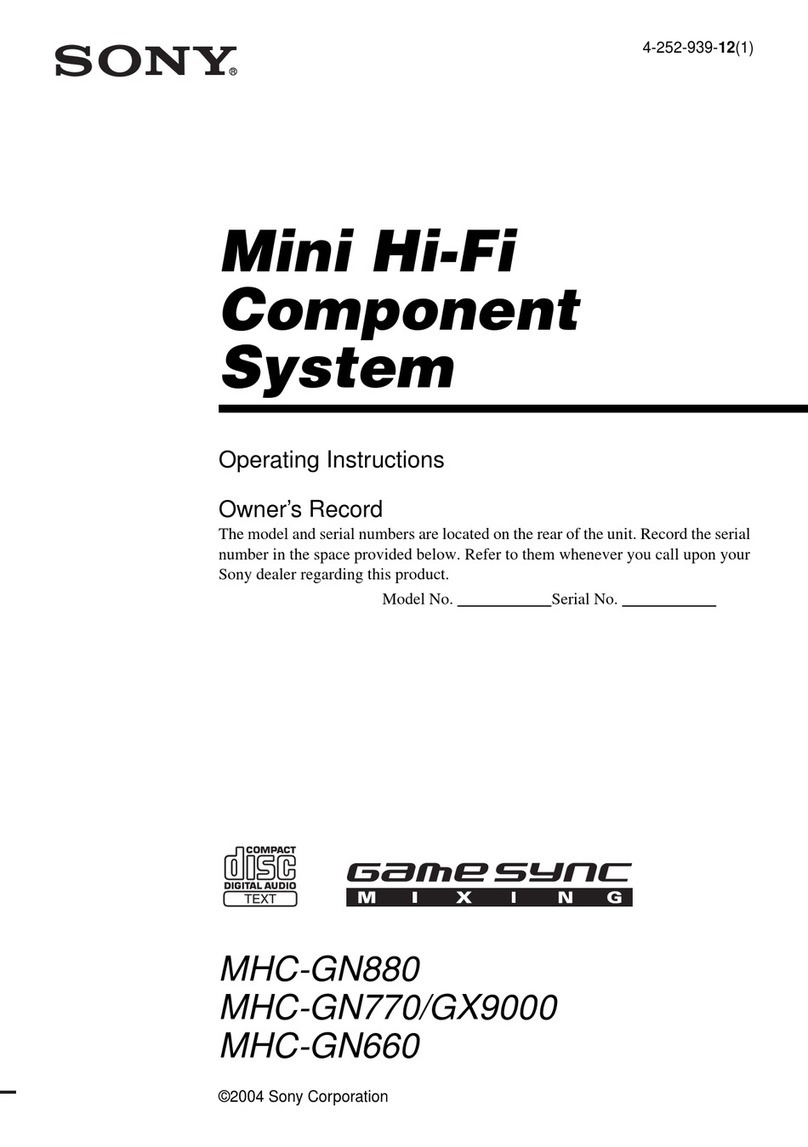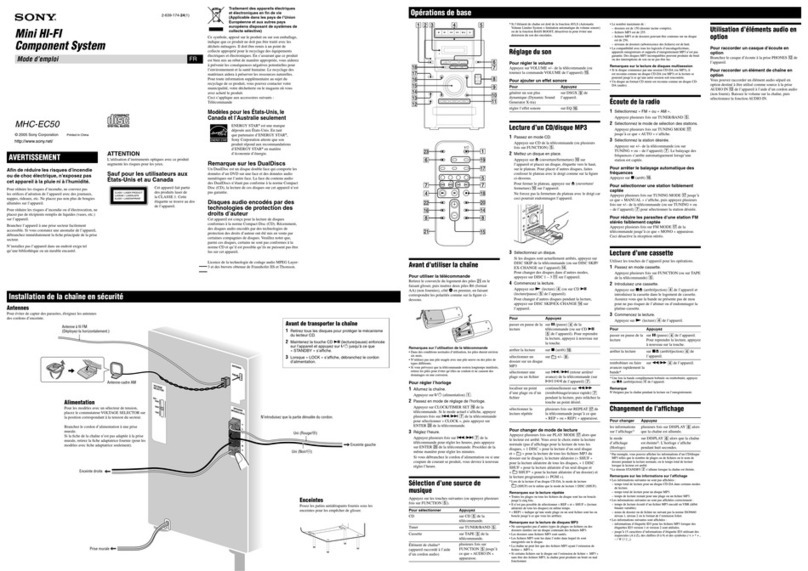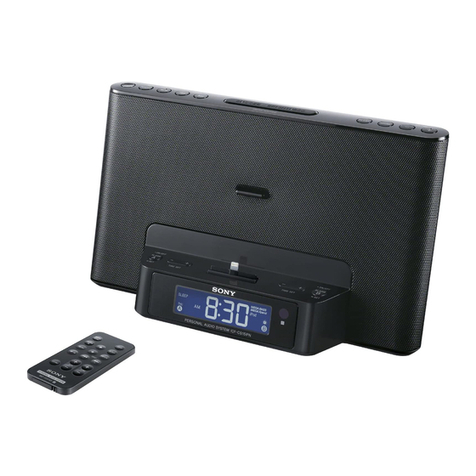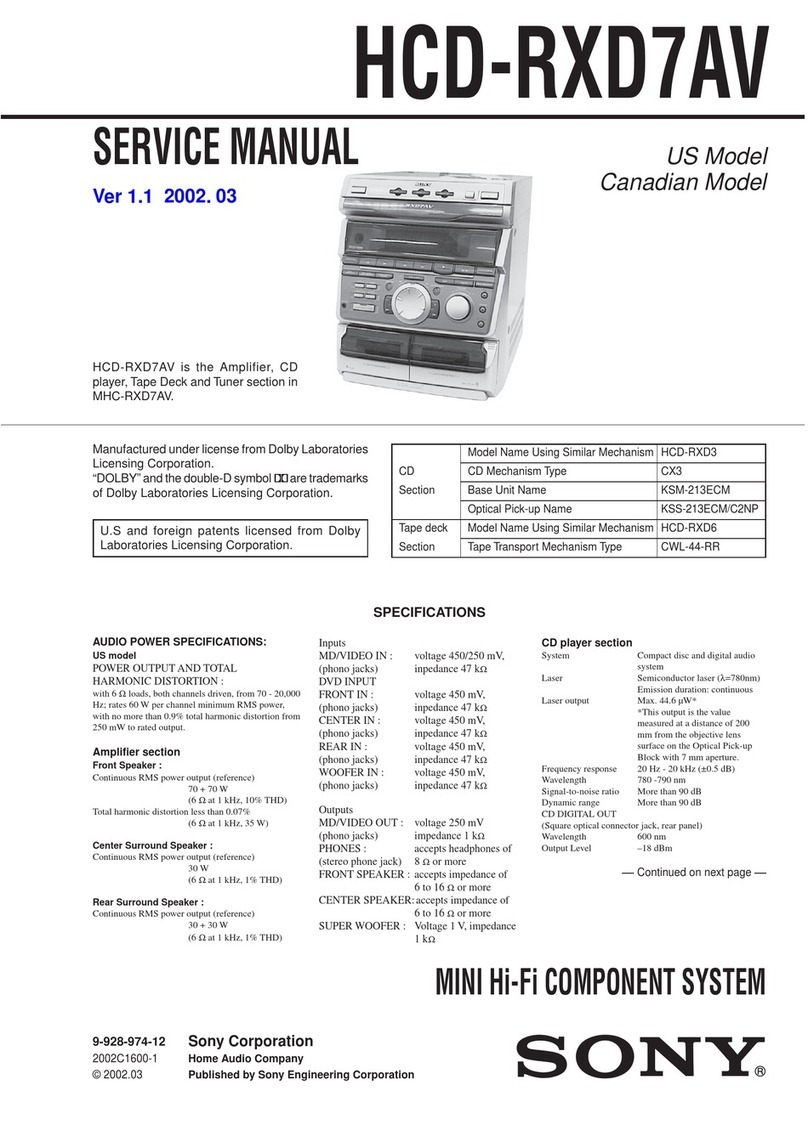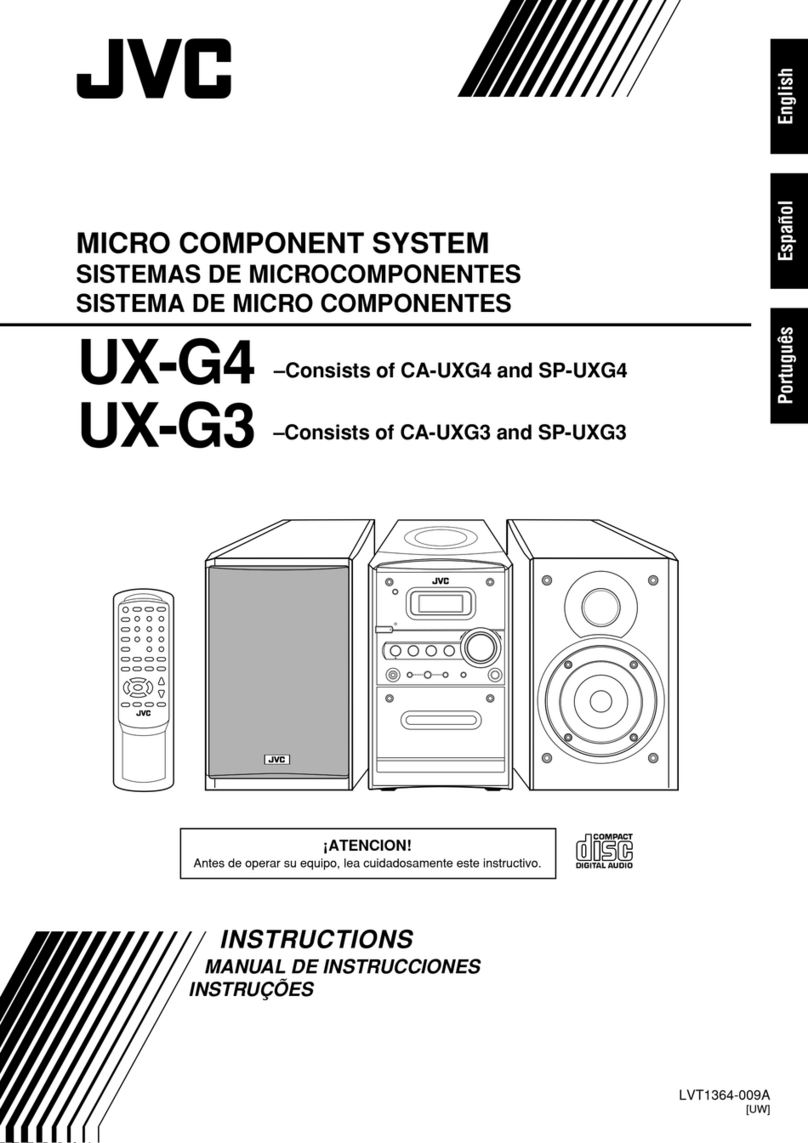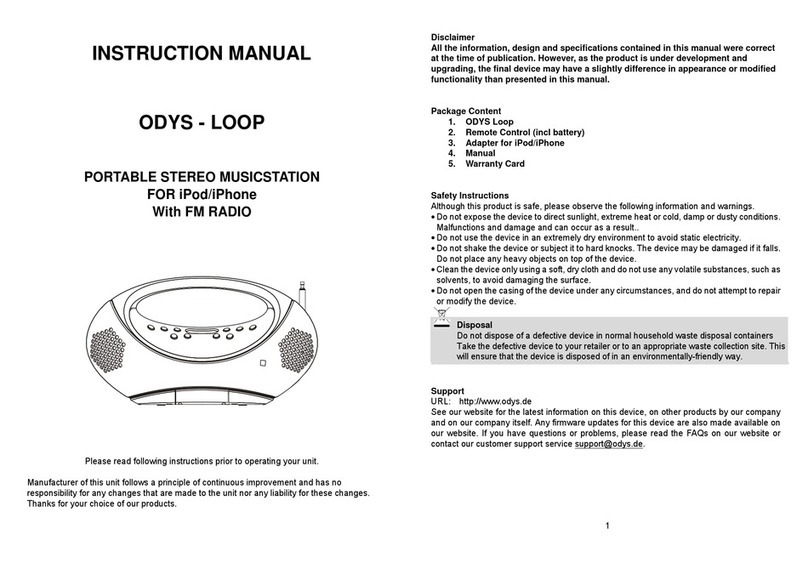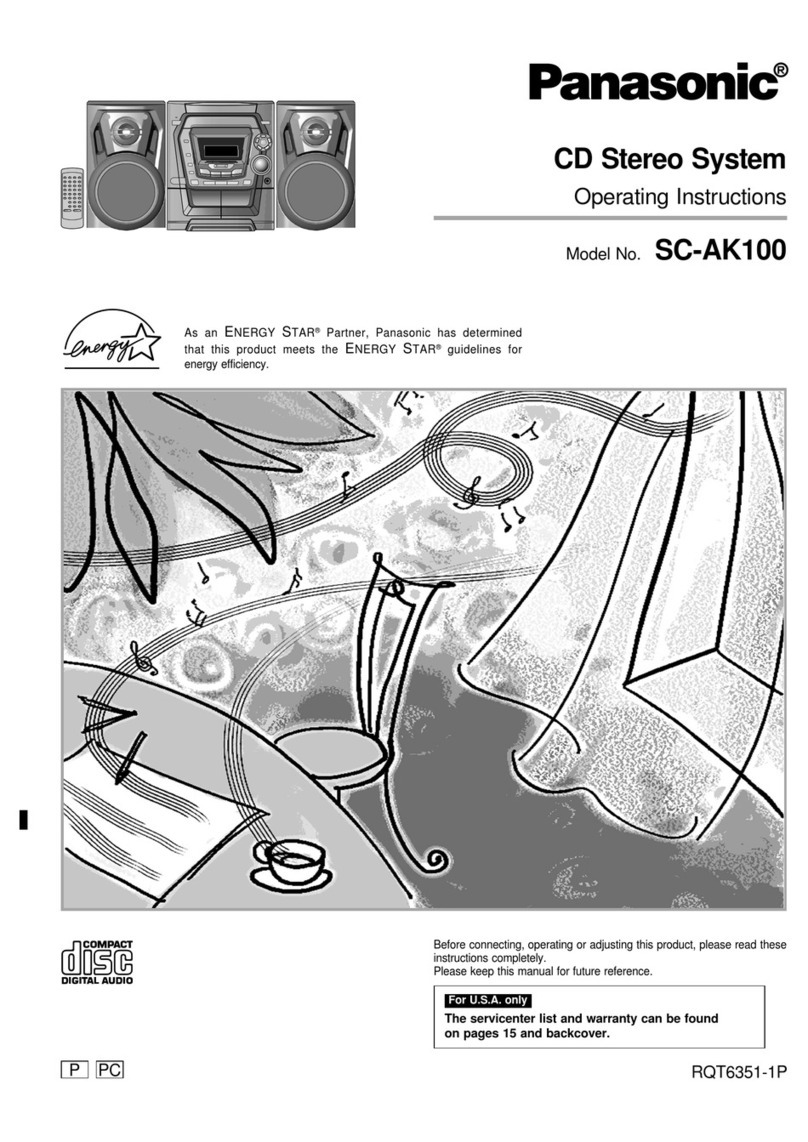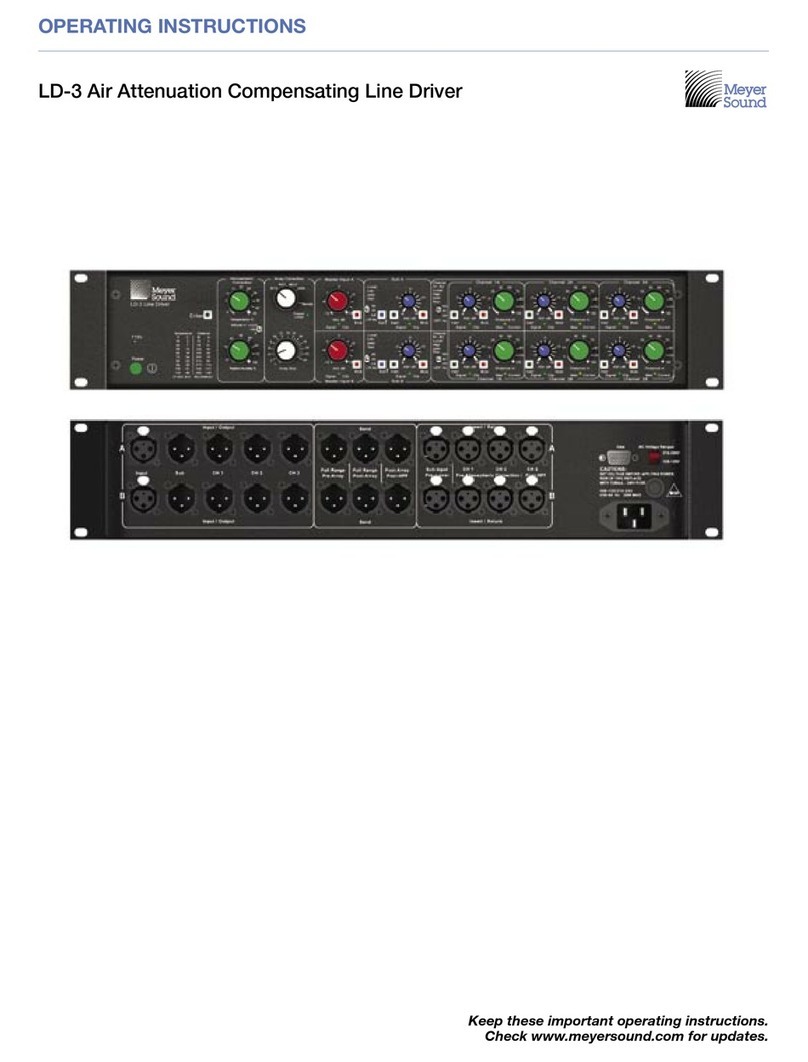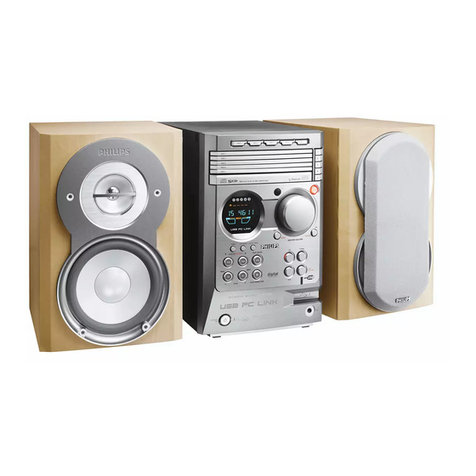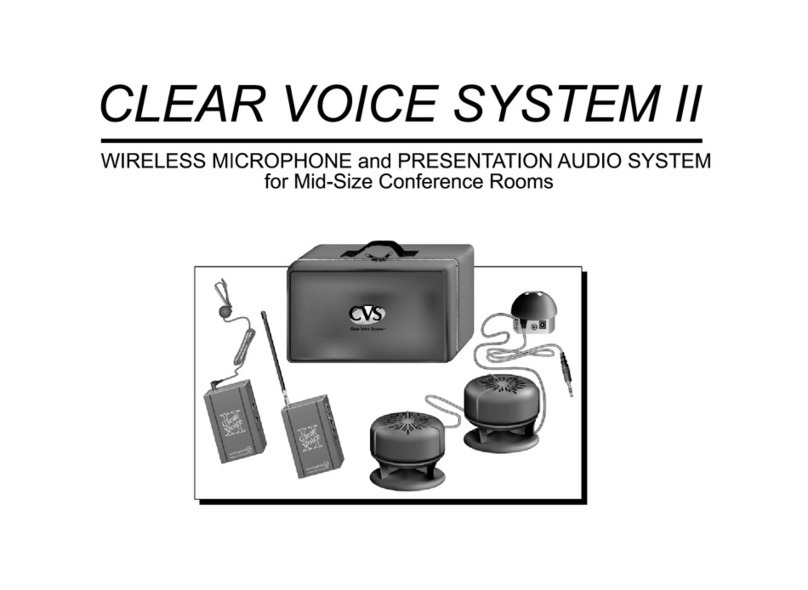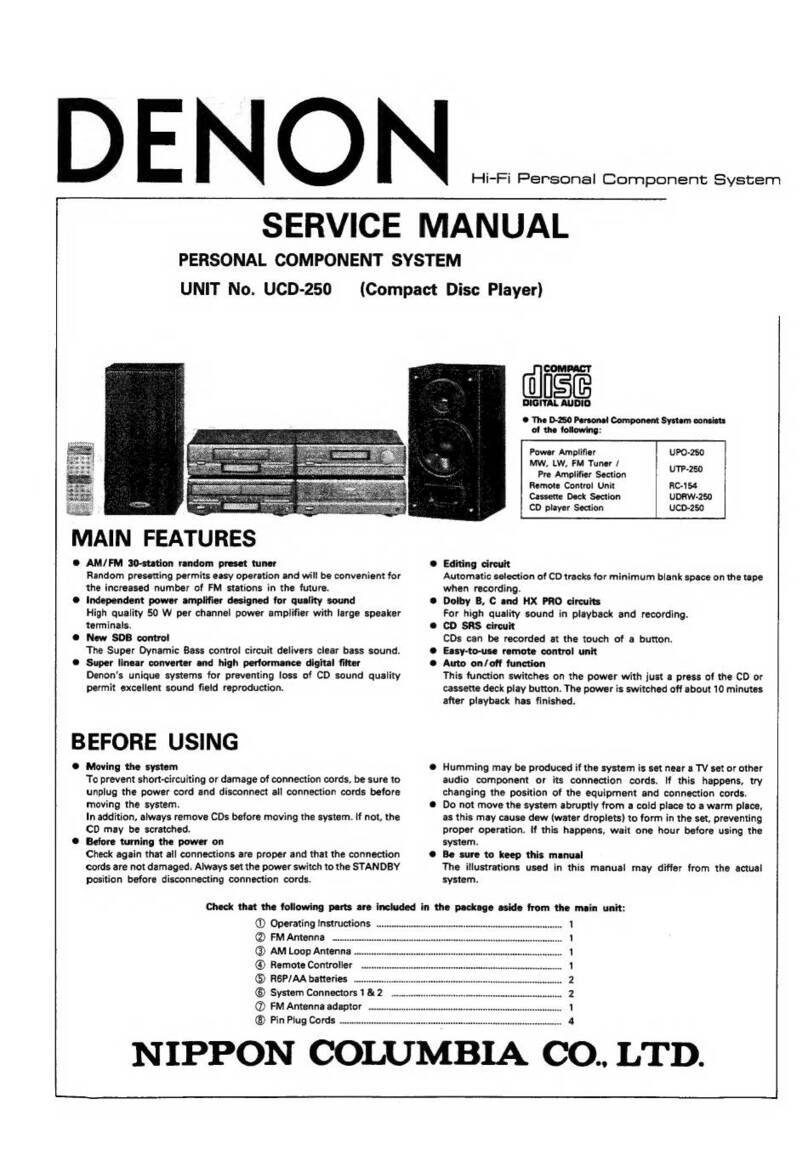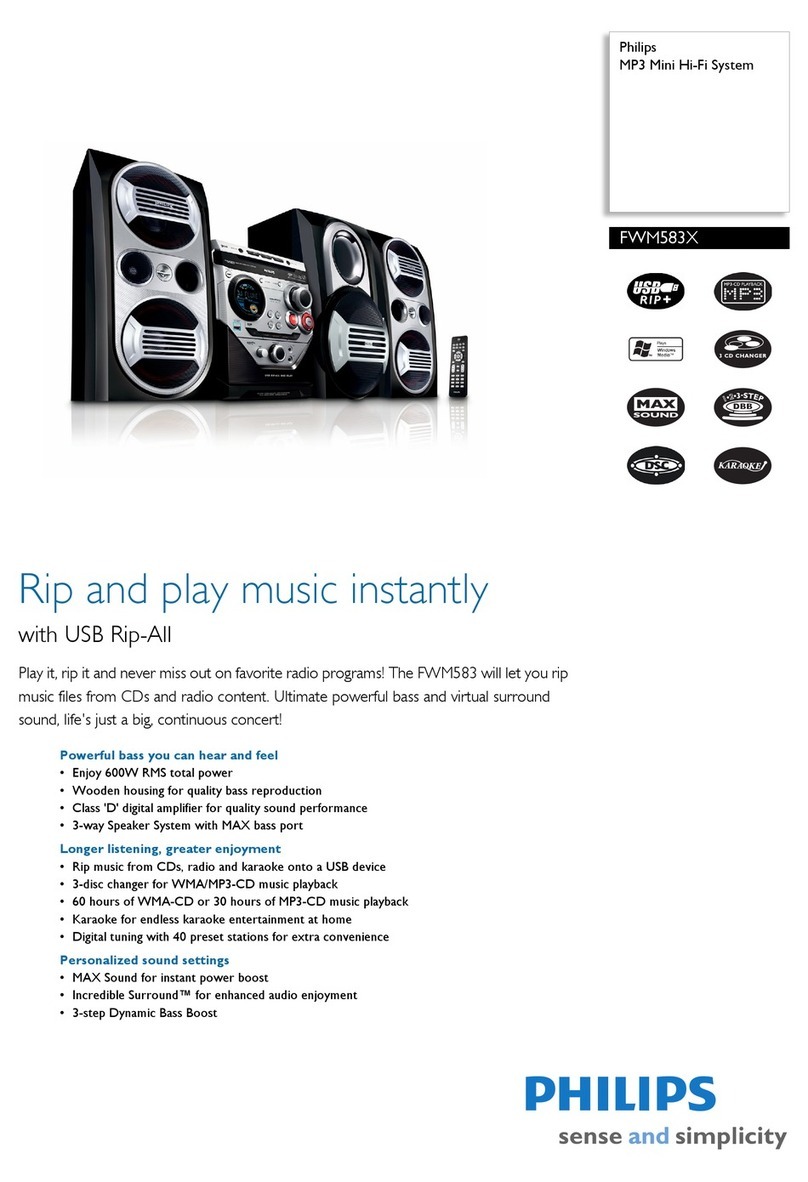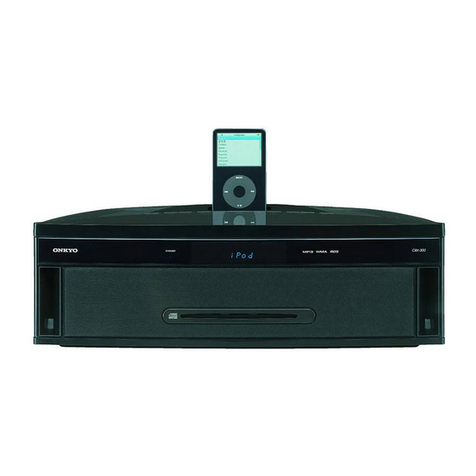5
HCD-GTR6/GTR6B/GTR7/GTR8/GTR8B
TABLE OF CONTENTS
1. DISASSEMBLY
1-1. Case (Top)............................................................................ 7
1-2. Tape Mechanism Deck......................................................... 7
1-3. Loading panel ...................................................................... 8
1-4. Front Panel Section.............................................................. 8
1-5. MIC Board, USB Board, MICRV Board,
Headphone Board................................................................ 9
1-6. Display Board, STR Board, CD SW Board......................... 9
1-7. Tuner pack ......................................................................... 10
1-8. Subtrans Board .................................................................. 10
1-9. DC Fan, Power Transformer (T1200)................................ 11
1-10. Main Board, Front Boars Section...................................... 11
1-11. Front Board, GTH Subwoofer Board ............................... 12
1-12. Back Panel Section, DC Fan.............................................. 12
1-13. CD Block Section .............................................................. 13
1-14. DMB-19 Board, GTH HUB Board.................................... 13
1-15. Driver MT Board, SW MT Board ..................................... 14
1-16. Optical Pick-up.................................................................. 14
1-17. Sensor Board...................................................................... 15
1-18. Motor(TB) Board............................................................... 15
1-19. Motor (LD) Board ............................................................. 16
2. TEST MODE .............................................................. 17
3. MECHANICAL ADJUSTMENTS .........................19
4. ELECTRICAL ADJUSTMENTS ..........................20
5. DIAGRAMS
5-1. Block Diagram — USB Section —................................... 22
5-2. Block Diagram — RF/Servo Section — ........................... 23
5-3. Block Diagram — Tape/Tuner Section —......................... 24
5-4. Block Diagram — Main Section — .................................. 25
5-5. Block Diagram — AMP/Subwoofer Section —................ 26
5-6. Block Diagram — Display/Power Section —................... 27
5-7. Circuit Boards Location..................................................... 28
5-8. Printed Wiring Board — Display Board —....................... 30
5-9. Schematic Diagram — Display Board — ......................... 31
5-10. Printed Wiring Boards — DMB19 Board — .................... 32
5-11. Schematic Diagram — DMB19 Board (1/4) —................ 33
5-12. Schematic Diagram — DMB19 Board (2/4) —................ 34
5-13. Schematic Diagram — DMB19 Board (3/4) —................ 35
5-14. Schematic Diagram — DMB19 Board (4/4) —................ 36
5-15. Printed Wiring Board — Front Board — .......................... 37
5-16. Schematic Diagram — Front Board — ............................. 38
5-17. Printed Wiring Board — Main Board —........................... 39
5-18. Schematic Diagram — Main Board (1/5) —..................... 40
5-19. Schematic Diagram — Main Board (2/5) —..................... 41
5-20. Schematic Diagram — Main Board (3/5) —..................... 42
5-21. Schematic Diagram — Main Board (4/5) —..................... 43
5-22. Schematic Diagram — Main Board (5/5) —..................... 44
5-23. Printed Wiring Board — MIC and MIC RV Board —...... 45
5-24. Schematic Diagram — MIC and MIC RV Board —......... 46
5-25. Printed Wiring Board — STR and CD_SW Board — ...... 47
5-26. Schematic Diagram — STR and CD_SW Board — ......... 48
5-27. Printed Wiring Board — Trans and Sub Trans Board — .. 49
5-28. Schematic Diagram — Trans and Sub Trans Board —..... 50
5-29. Printed Wiring Board — Sub Woofer Board — ................ 51
5-30. Schematic Diagram — Sub Woofer Board —................... 52
5-31. Printed Wiring Boards —
Headphone and USB CD Board —................................... 53
5-32. Schematic Diagram —
Headphone and USB CD Board —................................... 54
5-33. Printed Wiring Board — HUB Board —........................... 55
5-34. Schematic Diagram — HUB Board — ............................. 56
5-35. Printed Wiring Board — DRIVER Board — .................... 57
5-36. Printed Wiring Board — DRIVER Board — .................... 58
6. EXPLODED VIEWS
6-1. Main Section...................................................................... 66
6-2. Back Panel Section ............................................................ 67
6-3. Front Panel Section (1) ...................................................... 68
6-4. Front Panel Section (2) ...................................................... 69
6-5. Chassis Section .................................................................. 70
6-6. CD Mechanism Section (1) ............................................... 71
6-7. CD Mechanism Section (2) ............................................... 72
7. ELECTRICAL PARTS LIST ................................. 73
